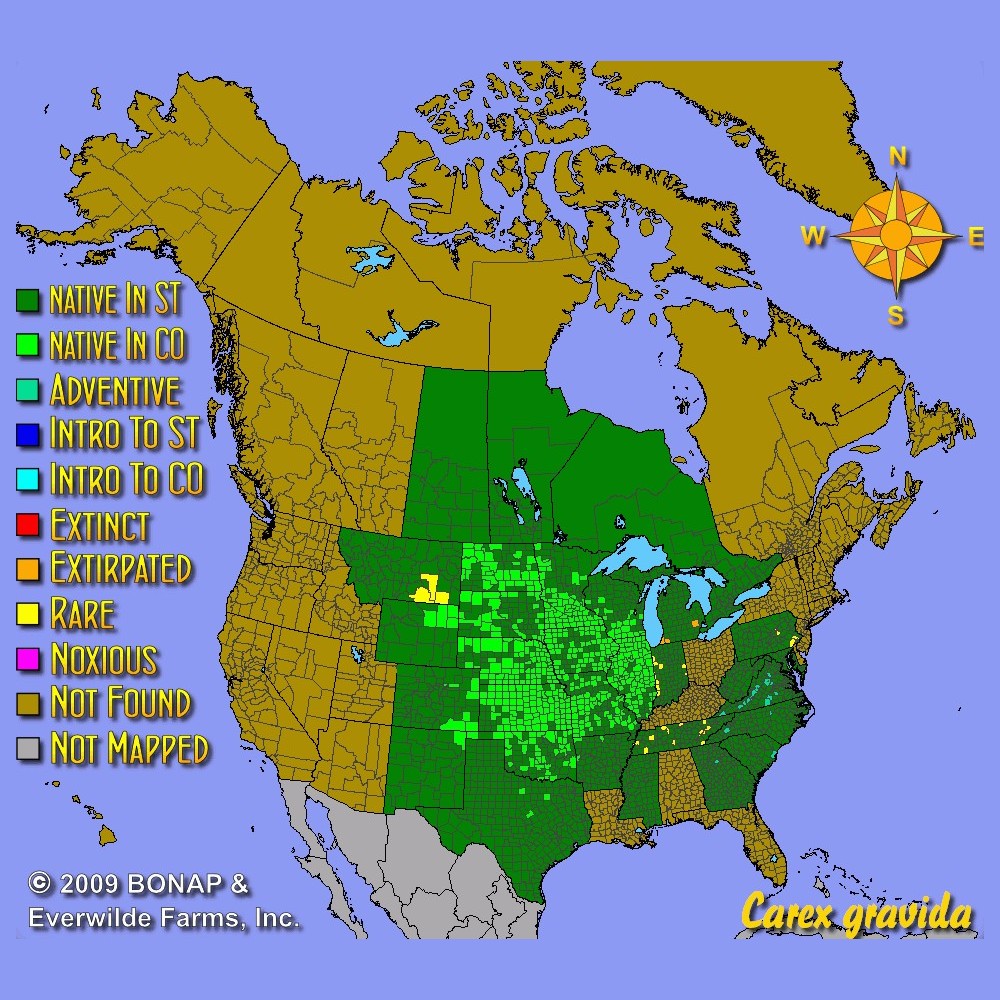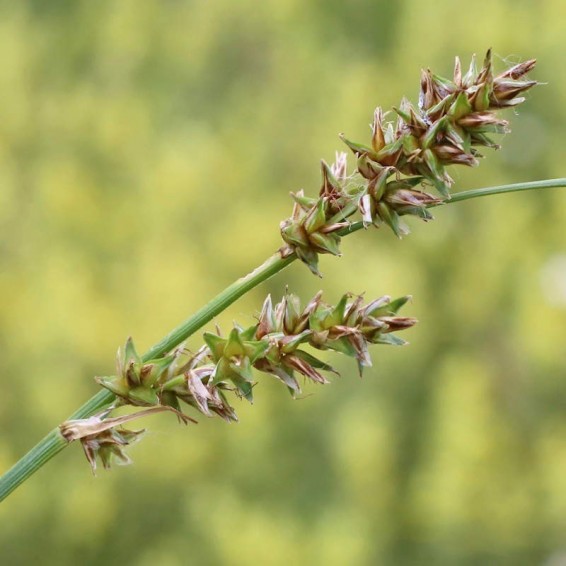Long Awned Bracted Sedge Seeds
Carex gravida
- HOW TO GROW
- FAST FACTS
HOW TO GROW
Sowing: Direct sow either in late fall or early spring. Plant the seed just below the surface of the soil, compacting the soil very firmly. For spring planting, mix the seeds with moist sand and store in the refrigerator for 60 days before planting. Keep the soil lightly moist until germination, since this seed cannot germinate in dry soil.
Growing: Water seedlings regularly until they become established. This plant adapts well to either dry or moist soil, as well as growing in sandy or rocky soil. It also has some tolerance for drought, though the foliage may die back somewhat in especially dry weather. This plant attracts small birds and resists deer.
Seed Saving: At the end of the season, the seed heads will begin to turn from green to brown. Remove them as soon as they ripen to their mature brown color, and spread them out to dry. Thresh them to separate the seed from the stems. Store the seed in a cool, dry place.
FAST FACTS
Common Names: Heavy Sedge
Latin Name: Carex gravida
Species Origin: US Native Grass or Sedge
Type: Native Grasses, Cool Season
Life Cycle: Perennial
USDA Zones: 3, 4, 5, 6, 7
US Regions: Arid/Desert, Plains/Texas, Midwest, Northeast, Southeast
Seeds per Ounce: 12,000
Stratification: Cold/Wet for 8 Weeks
Germination Ease: Stratify 8 Weeks
Sunlight: Full Sun, Part Sun
Height: 24 Inches
Color: Green, Brown
Bloom Season: Blooms Early Summer
DESCRIPTION

HOW TO GROW
Sowing: Direct sow either in late fall or early spring. Plant the seed just below the surface of the soil, compacting the soil very firmly. For spring planting, mix the seeds with moist sand and store in the refrigerator for 60 days before planting. Keep the soil lightly moist until germination, since this seed cannot germinate in dry soil.
Growing: Water seedlings regularly until they become established. This plant adapts well to either dry or moist soil, as well as growing in sandy or rocky soil. It also has some tolerance for drought, though the foliage may die back somewhat in especially dry weather. This plant attracts small birds and resists deer.
Seed Saving: At the end of the season, the seed heads will begin to turn from green to brown. Remove them as soon as they ripen to their mature brown color, and spread them out to dry. Thresh them to separate the seed from the stems. Store the seed in a cool, dry place.
FAST FACTS
Common Names: Heavy Sedge
Latin Name: Carex gravida
Species Origin: US Native Grass or Sedge
Type: Native Grasses, Cool Season
Life Cycle: Perennial
USDA Zones: 3, 4, 5, 6, 7
US Regions: Arid/Desert, Plains/Texas, Midwest, Northeast, Southeast
Seeds per Ounce: 12,000
Stratification: Cold/Wet for 8 Weeks
Germination Ease: Stratify 8 Weeks
Sunlight: Full Sun, Part Sun
Height: 24 Inches
Color: Green, Brown
Bloom Season: Blooms Early Summer




